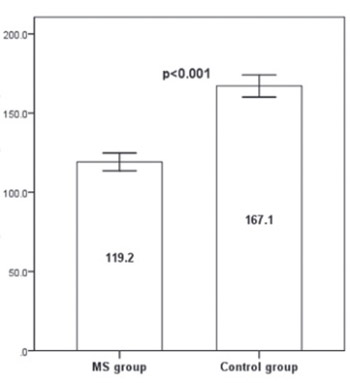Serum total antioxidant capacity in patients with multiple sclerosis
DOI:
https://doi.org/10.17305/bjbms.2011.2620Keywords:
multiple sclerosis, total antioxidant capacity (TAC), oxidative stressAbstract
Multiple sclerosis (MS) is a chronic inflammatory disease of the central nervous system (CNS). It is characterized by loss of myelin, the fatty tissue that surrounds and protects nerve fibres allowing them to conduct electrical impulses. Recent data indicate that oxidative stress (OS) plays a major role in the pathogenesis of multiple sclerosis (MS). The aim of this study was to estimate level of serum total antioxidative capacity in patients with multiple sclerosis. Our cross-sectional study included 33 patients with MS and 24 age and sex matched control subjects. All our patients had a Poser criteria for definite diagnostic categories of multiple sclerosis. Serum total antioxidant capacity (TAC) was measured by quantitative colorimetric determination, using Total antioxidant Capacity-QuantiCromAntioxidant Assay Kit (BioAssay systems, USA; DTAC-100). Mean serum TAC in multiple sclerosis group of patients was 119.2 mM Trolox equivalents and was significantly lower (p<0.001) compared to the control group of subjects (167.1 mM Trolox equivalents). Our results showed that oxidative stress plays an important role in pathogenesis of multiple sclerosis. This finding, also, suggests the importance of antioxidants in diet and therapy of MS patients.
Citations
Downloads

Additional Files
Published
How to Cite
Accepted 2017-11-01
Published 2011-02-20









